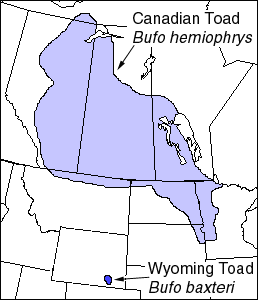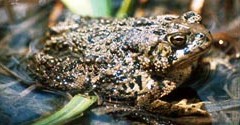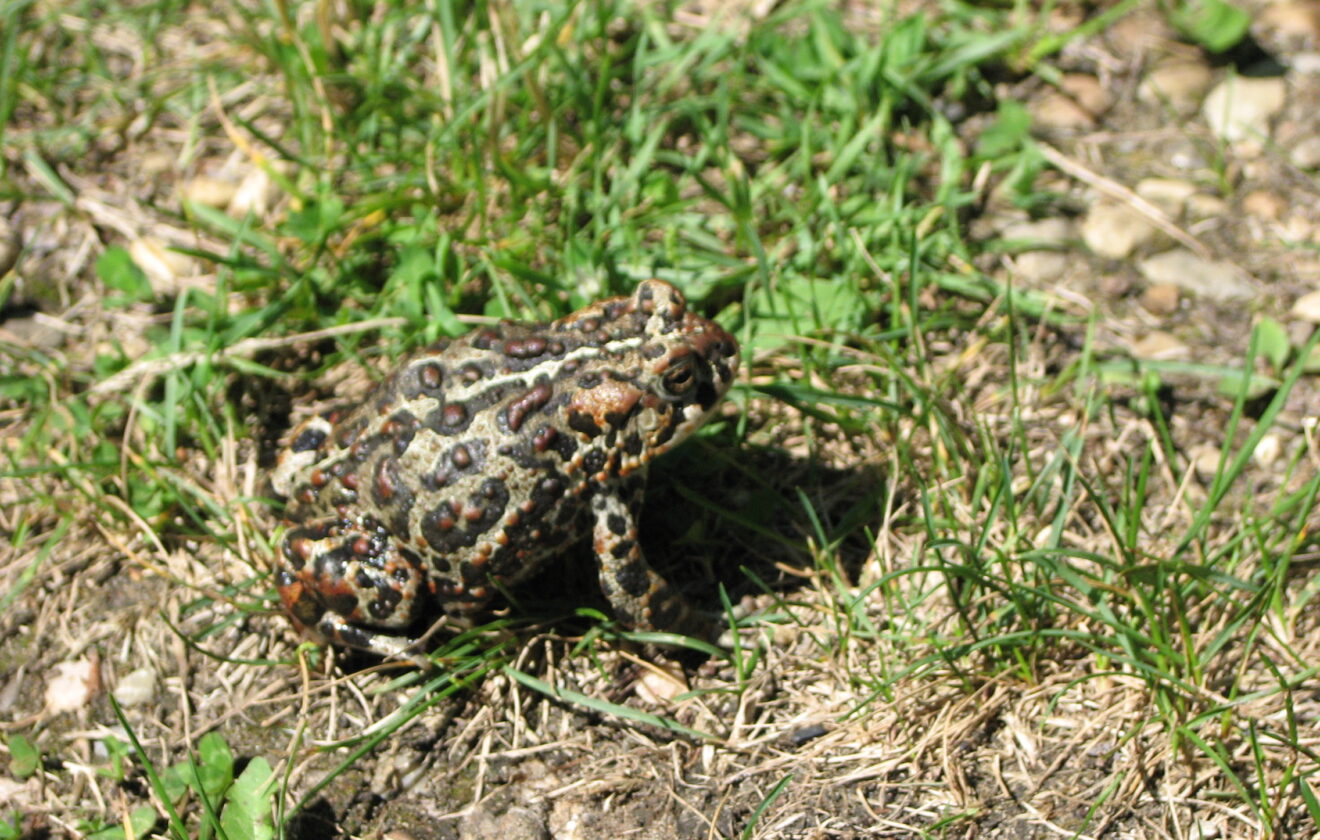Anaxyrus hemiophrys: Unveiling the Hidden World of the Canadian Toad#
Beneath the lush grasses and alongside gently flowing streams throughout parts of Canada and the northern United States, secretive creatures emerge at twilight. With their melodic choruses subtly enhancing the ambience of evening marshlands, these humble amphibians shape the balance of a delicate ecosystem. Among them, one inconspicuous yet ecologically critical species stands out—the Canadian toad, known scientifically as Anaxyrus hemiophrys.
Characterized by distinctive patterns and intriguing behaviors, this resilient little amphibian might not garner as much attention as more vividly colored tropical frogs, yet it embodies the fascinating beauty and complexity of North American wildlife. Journey with us into the captivating, intricate world of the Canadian toad and discover why their survival matters deeply to the ecosystems they inhabit—and ultimately, to us all.
Taxonomy and Classification#
The Canadian toad, scientifically known as Anaxyrus hemiophrys, occupies a distinct place within amphibian taxonomy. Initially classified under the genus Bufo, recent taxonomic updates necessitated shifting this and related toad species into the genus Anaxyrus, reflecting advancements in genetic research. Today, it resides comfortably within the Bufonidae family, which comprises numerous species known collectively as “true toads”.
The Bufonidae family is recognized for members possessing glandular, often warty skin, and potent defensive secretions. Among relatives in genus Anaxyrus, the Canadian toad sits alongside species such as the American toad (Anaxyrus americanus) and Woodhouse’s toad (Anaxyrus woodhousii). What distinguishes Anaxyrus hemiophrys from these close cousins, however, lies not only in subtle anatomical differences but profound adaptations to colder, harsher climates of northern latitudes.
Natural Habitat#
Anaxyrus hemiophrys thrives primarily in the northern Great Plains region. Their range extends across southern Canada—encompassing Alberta, Saskatchewan, Manitoba—and dips southward into Montana, North Dakota, Minnesota, and portions of South Dakota. Preferring habitats characterized by moisture availability and open terrain, these toads demonstrate remarkable adaptability to seasonal changes and climatic extremes.
Canadian toads favor shallow wetlands and marshy grasslands dotted with ephemeral pools formed by melting snow or spring rains. Occasionally venturing into aspen parklands or the edges of boreal forests, they are typically found near slow-moving waters, including small streams and ponds. This diverse range of micro-habitats provides vital resources—from abundant insect prey to moist refugia that enable them to survive freezing northern winters.
Immersed in their natural habitat, Canadian toads exist in splendid symbiosis with the rhythm of seasons. During blistering summers, they retreat into shaded hideaways beneath logs and vegetation to avoid desiccation. Winters compel them to burrow deep beneath frost lines, often sheltering underground with amazing precision to survive harsh freezing temperatures.
Physical Characteristics#
Although subtlety often defines the Canadian toad’s appearance, careful observation reveals intricate, captivating beauty. Adult Anaxyrus hemiophrys tend to measure between 5 and 9 centimeters in length, females typically larger than males. Their bodies present a robust, stocky shape well-suited to life among grasses, soil burrows, and muddy marshlands.
The skin of the Canadian toad is conspicuously granular, displaying numerous warty glands essential for defense purposes. These glands produce a mildly toxic secretion called bufotoxin, which deters potential predators like birds, skunks, and raccoons. The species takes its iconic look from its coloration and pattern—olive-green to reddish-brown skin adorned by numerous darker, irregular blotches that bear black outlines and a pale dorsal stripe running neatly down the back.
Their eyes are large and strategically placed to offer excellent peripheral vision—a valuable adaptation during nocturnal insect-hunting excursions. The vertical pupils adjust swiftly between dim evening twilight and brighter daytime conditions, providing visual acuity as they navigate through grassy habitats.
Behavior and Life Cycle#
Nocturnal Predators of the Grasslands#
When dusk blankets their prairie wetlands, Canadian toads emerge, driven largely by hunger after a day spent hidden beneath vegetation or within shallow earth dens. Feeding predominantly on insects—beetles, ants, moths, and flies—they play a subtle yet crucial role as pest controllers within their ecosystems.
Their hunting technique features patience and rapid execution: the toad lies still, blending effortlessly with ambient vegetation, until an unwary insect ventures near within striking range. In an instant, its sticky tongue propels forth, capturing prey with remarkable precision.
Reproductive Insights and Amphibious Choruses#
The breeding season transforms quiet marshes into vibrant soundscapes, typically beginning in early spring or shortly after heavy rains. Males produce distinctive trills, their calls vibrating through the night—a mesmerizing symphony announcing readiness to mate. Chorus intensity becomes especially profound on warmer nights, often persuading even novice naturalists into reflective wonder.
Females eventually respond, approaching breeding pools where fertilization occurs externally. Each female deposits thousands of eggs, neatly arranged in long strings attached gently to submerged vegetation. Tadpoles quickly hatch, progressing through rapid transformations as spring turns into summer, metamorphosing into tiny juvenile toadlets by early summer.
Ecological Role#
The Canadian toad holds substantial ecological significance within its habitat, operating simultaneously as predator and prey. Its voracious appetite helps balance insect populations, naturally suppressing pests that might otherwise damage native vegetation or agricultural crops nearby. Consequently, their existence helps maintain healthy, stable ecosystems.
They also serve as essential prey items for higher trophic-level predators, including snakes, various avian predators, skunks, and raccoons. These complex predator-prey interactions help weave the intricate tapestry necessary for resilient, fully functioning natural environments.
Threats and Conservation Status#
Though previously abundant throughout much of their historical range, Canadian toads face growing threats from habitat degradation, pollution, and emerging diseases. Agricultural expansion and urban development significantly alter or destroy critical marshland habitats they depend upon. Additionally, air and water pollution from pesticides poses ongoing challenges to amphibian populations, whose semi-permeable skin creates heightened vulnerability.
The spread of devastating diseases, particularly chytridiomycosis linked to the fungus Batrachochytrium dendrobatidis, represents an alarming emerging threat. This fungal disease impairs respiratory functions and skin integrity, contributing to amphibian mortality rates worldwide.
Currently listed as “Least Concern” by the International Union for Conservation of Nature (IUCN), vigilance remains essential. Conservation actions should focus on proactive habitat management efforts, reducing pollution, educating communities, and carefully monitoring disease presence within populations.
Cultural and Scientific Significance#
Indigenous cultures across their range have historically regarded amphibians like the Canadian toad with respect, sometimes referencing their calls and migrations as season markers tied to agricultural activities or life-cycle ceremonies.
For scientists, species like Anaxyrus hemiophrys often act as sensitive indicators (“bioindicators”) that reflect ecosystem health. Observing fluctuations in their populations can reveal early signals of environmental stress or pollution—allowing conservationists timely action to mitigate negative impacts for wildlife and humans alike.
Conclusion#
The humble Canadian toad embodies the interconnected beauty of nature’s balance, quietly fulfilling roles essential for ecological integrity and human wellbeing. Understanding its intriguing life cycle, adaptations, and vulnerabilities is key to championing long-term conservation. Our knowledge and action, guided by curiosity and appreciation, remain critically important.
By supporting conservation measures, educating communities, and ensuring the preservation of vital wetlands, we can secure a thriving future for Anaxyrus hemiophrys—and, ultimately, many species that depend upon the same delicate web of life.













